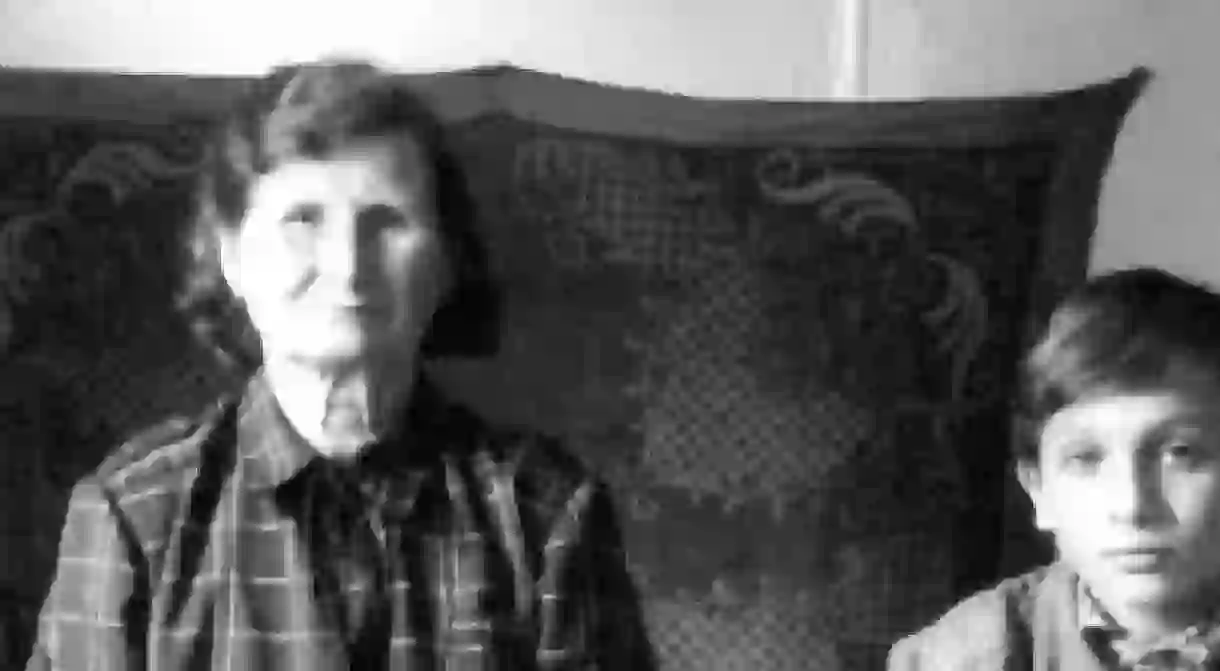Latvian Photography: The Anthropological Eye

Latvian photographers Inta Ruka, Andrejs Grants and Arnis Balcus create socially engaged yet artistically profound works that interrogate post-Soviet Latvian identity, whilst documenting everyday life in their own communities. Culture Trip looks into these artists, delving into their inspirations and influences.

In 2009 the anthropologist Daniel Miller and his PhD student Fiona Parrott knocked on the doors of 30 houses on one street in south London. They were investigating the residents’ lives in order to understand the continuity of loss, mourning and the precarious balance of existence that existed in this community. What they found was that humankind projects its needs, anguishes and desires on material things; the everyday paraphernalia we like to be surrounded by.
Inta Ruka
In 2004, the Latvian photographer Inta Ruka undertook a similar project. She started to document Life at 5a Amalias Street, an apartment block on the outskirts of Riga. The artist not only took pictures, but also engaged herself in conversation with the tenants. In so doing, everyone involved was led to an existential consideration about their lives, their happiness and their sorrow. It is clear that Inta Ruka is an artist whose work shares similarities with the anthropological perspective. She uses her camera to get closer to people and reach a common language for mutual understanding and comprehension.

However, the documentary approach does not dominate her practice, which is always direct, but also adorned with figurative details in the composition. One of the 5a Amalias Street pictures presents a child on his couch, a plausible daily habit, if not a little theatrically staged with the addition of a Ned Kelly armoured hat. The armour fully covers his face, as he seems to perform the outlaw depicted in Sidney Nolan’s paintings. In the series My Country People (1986) Ruka portrayed extended family members. The project attested to both the photographer’s desire to describe her own Latvian environment, and the professional purpose of challenging viewers.What she is interested in, as she states, is “the region where my parents lived.” Her shoots are always in black and white; they come out as archaeological images that never fail to convey a sense of belonging, all observed through a nostalgic and sometime saturnine lens.
Andrejs Grants
Another Latvian photographer, close to Ruka’s work in both sensibility and technique, is Andrejs Grants, who was born in Riga in 1955. Together they were founders and exponents of ‘Group A’, an artistic collective that adopted a reportage style to describe everyday life. Grants is highly acclaimed in Latvia for both his contribution to photography’s popularity, and his commitment to the educational system.

His subjects are people walking on city streets, relaxing in the countryside or hanging around in the suburban area; he has never put his art on a pedestal, but, quite the contrary, always fought against elite systems. Art is an empirical fact that everybody can understand, familiarise with, and produce; Andrejs Grants’ work makes this visible.
Images acts as reflections for viewers and, as Man Ray suggested by simply hanging a framed mirror at the end of one of his exhibitions, people need to recognise themselves in what they see. Walker Evans and Henri Cartier Bresson have been remarkable influences for Grants, whose artistic conception could be described to some extent with Bresson’s words: “The photography itself doesn’t interest me. I want to capture a minute part of reality.”
Grants and Ruka’s project Latvia: Changing and Unchanging Reality, for example, analyses the metamorphosis their country has gone through since independence from Russia, whilst pointing out cultural resistance and impediments to change. Photography is then a “fragment of life”, as the artist explains, and Grants uses it to further connect people with their own realities.
Arnis Balcus
Arnis Balcus has been one of Grants’ talented students, and is well known by now both in Latvia and internationally. Apart from widely exhibiting in Europe, he’s also chief editor of FK magazine, the leading Latvian publication about photography. His work is a “ballad of sexual dependency” to borrow the expression from Nan Goldin’s project; from bedrooms to Riga streets, Balcus stages short stories focusing on the intimacy of naked bodies and the idea of humans as social animals, who interact both with one another and the surrounding environment.

Balcus presents daily subjects where, despite the adherence to the real, nothing appears haphazard or rambunctious, as it would be in the chaotic flux of an ordinary day. The photographer remarkably builds up a stage where his actors perform their parts. He captures people on the streets in a way that recalls Jeff Wall’s famous image from 1982, where a western white couple walk on a pedestrian path, overtaking a respectably dressed Asian man, while mimicking the look of his ethnicity. As with Balcus’ pictures, this photo could have been accidentally taken, but instead it was staged.
The Latvia artist is interested in the analysis of his national situation; his project Amnesia was exhibited in 2009 and described the state of oblivion into which some Soviet customs have sunk. Latvia, in fact, wanted to forget its past as quickly as it could, which risked the erasure of people’s memories as beneficial sources of individual and collective identification.
Latvian photography constitutes a valuable expression in terms of national aesthetics, but, above all, it is significant for what it does socially. The Baltic country has a great artistic tradition, illuminated by names such as Karlis Padegs and Vija Celmins; what seems to have driven it is an awareness of the work of art as something practical and socially involved. The casual pretentiousness of an expression such as ‘fine art’ is, in fact, inappropriate for a country that does not distinguish between beauty and use; in Latvia, they are mutually blurred.
Pictures courtesy 1: Chaudron, 2: Umea2014 European Capital of Culture, 3: Espaces Arts & Objects, 4: 5 Pieces Gallery.













